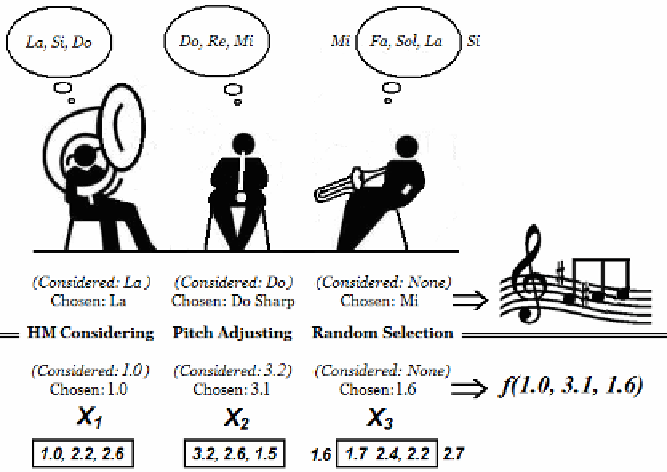Information Technology Reference
In-Depth Information
The procedure of HS is composed of five steps:
Step 1: Initialization of the problem and algorithm parameters
Minimize
f
(x), subject to
x
∈=
X
,
i
1, 2,...,
N
(1)
i
i
where
f
(
x
) is the objective function to be minimized, x is the set (so called orchestra)
of decision variables
x
i
;
N
is the number of decision variables (music instruments);
and
X
i
is the set of the possible range of values for each decision variable (the pitch
range of each instrument).
Step 2: Initialization of the harmony memory
The harmony memory (HM) is a memory location where all the solution vectors
and corresponding objective function values are stored. In this step, the HM matrix is
filled with solution vectors by taking the possible ranges into account and fitness
function values are calculated for each solution vector.
Step 3: Improvisation of a new harmony
A new harmony vector,
(
)
′
′
′
′
=
x
, is generated based on three rules. They
are memory consideration, pitch adjustment, and random selection. The value of a de-
sign variable can be selected from the values stored in HM with a probability of har-
mony memory considering rate (HMCR). It can be further adjusted by moving to a
neighbor value of a selected value from the HM with a probability of pitch adjusting
rate (PAR). Or, it can be selected randomly from the set of all candidate values with-
out considering the stored values in HM, with the probability of (1-HMCR). The
improvisation process of the HS algorithm is depicted in Figure 1.
xx
,
,...,
x
12
N
Fig. 1.
Improvisation of a new harmony in HS

Search WWH ::

Custom Search